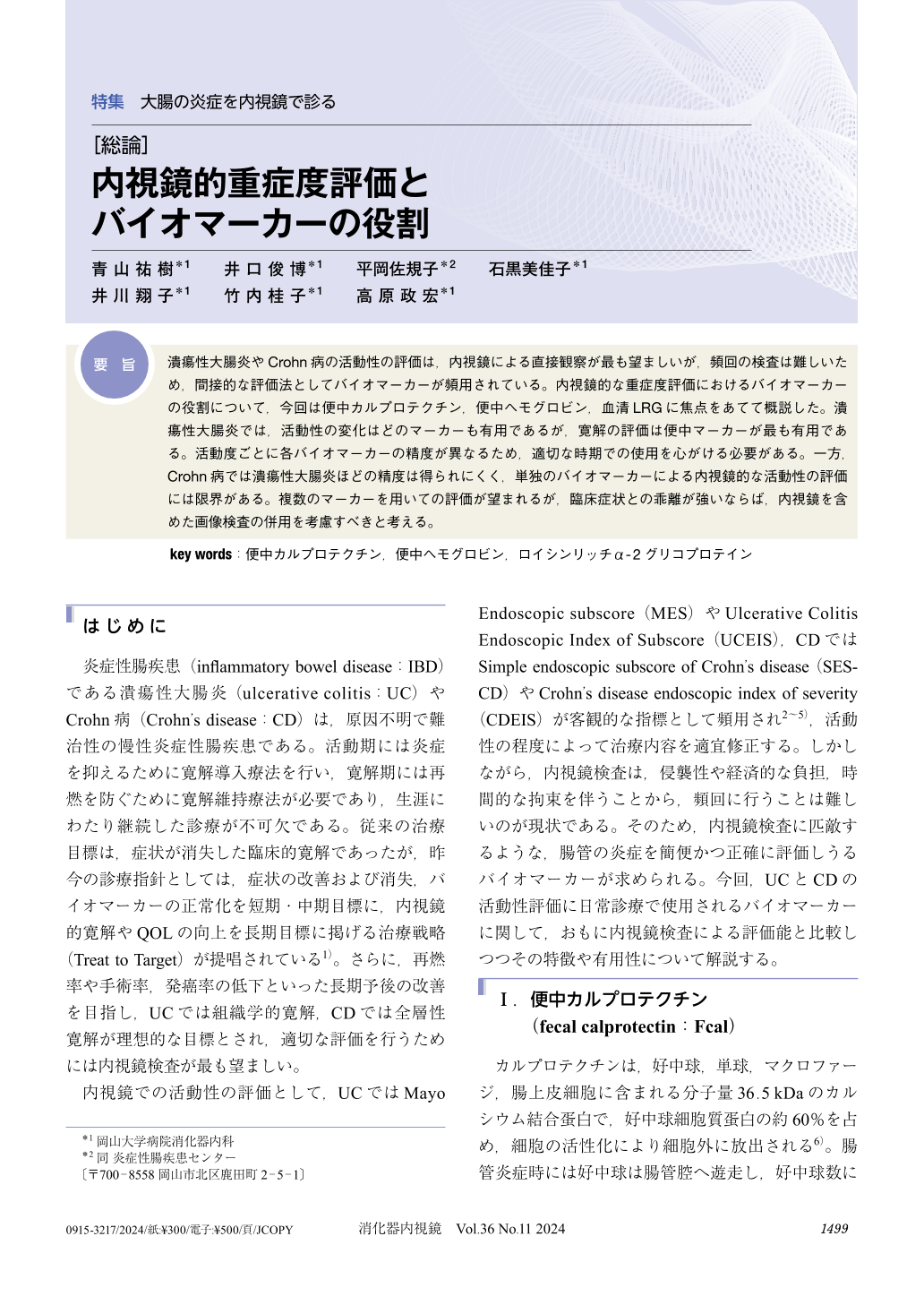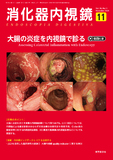Japanese
English
- 有料閲覧
- Abstract 文献概要
- 1ページ目 Look Inside
- 参考文献 Reference
要旨
潰瘍性大腸炎やCrohn病の活動性の評価は,内視鏡による直接観察が最も望ましいが,頻回の検査は難しいため,間接的な評価法としてバイオマーカーが頻用されている。内視鏡的な重症度評価におけるバイオマーカーの役割について,今回は便中カルプロテクチン,便中ヘモグロビン,血清LRGに焦点をあてて概説した。潰瘍性大腸炎では,活動性の変化はどのマーカーも有用であるが,寛解の評価は便中マーカーが最も有用である。活動度ごとに各バイオマーカーの精度が異なるため,適切な時期での使用を心がける必要がある。一方,Crohn病では潰瘍性大腸炎ほどの精度は得られにくく,単独のバイオマーカーによる内視鏡的な活動性の評価には限界がある。複数のマーカーを用いての評価が望まれるが,臨床症状との乖離が強いならば,内視鏡を含めた画像検査の併用を考慮すべきと考える。
Endoscopic observation is the optimal method for assessing the activity of ulcerative colitis and Crohn’s disease. However, frequent examinations are challenging. Therefore, the use of biomarkers as an indirect assessment method is recommended. This article will focus on fecal calprotectin, fecal hemoglobin, and serum LRG to elucidate the role of biomarkers in endoscopic severity assessment. In ulcerative colitis, all of these markers are useful for assessing changes in activity, and fecal markers are most useful for assessing remission. The accuracy of each biomarker differs depending on the activity level; therefore it is necessary to use them at the appropriate time. In contrast, in Crohn’s disease, there are limitations to the evaluation of endoscopic activity using a single biomarker because it is difficult to diagnose the same level of accuracy as in ulcerative colitis. It is recommended that multiple markers are used for evaluation. When there is a significant discrepancy between the clinical symptoms and the results of the biomarker assessment, it is necessary to consider the use of a combination of imaging tests including endoscopy.

© tokyo-igakusha.co.jp. All right reserved.


